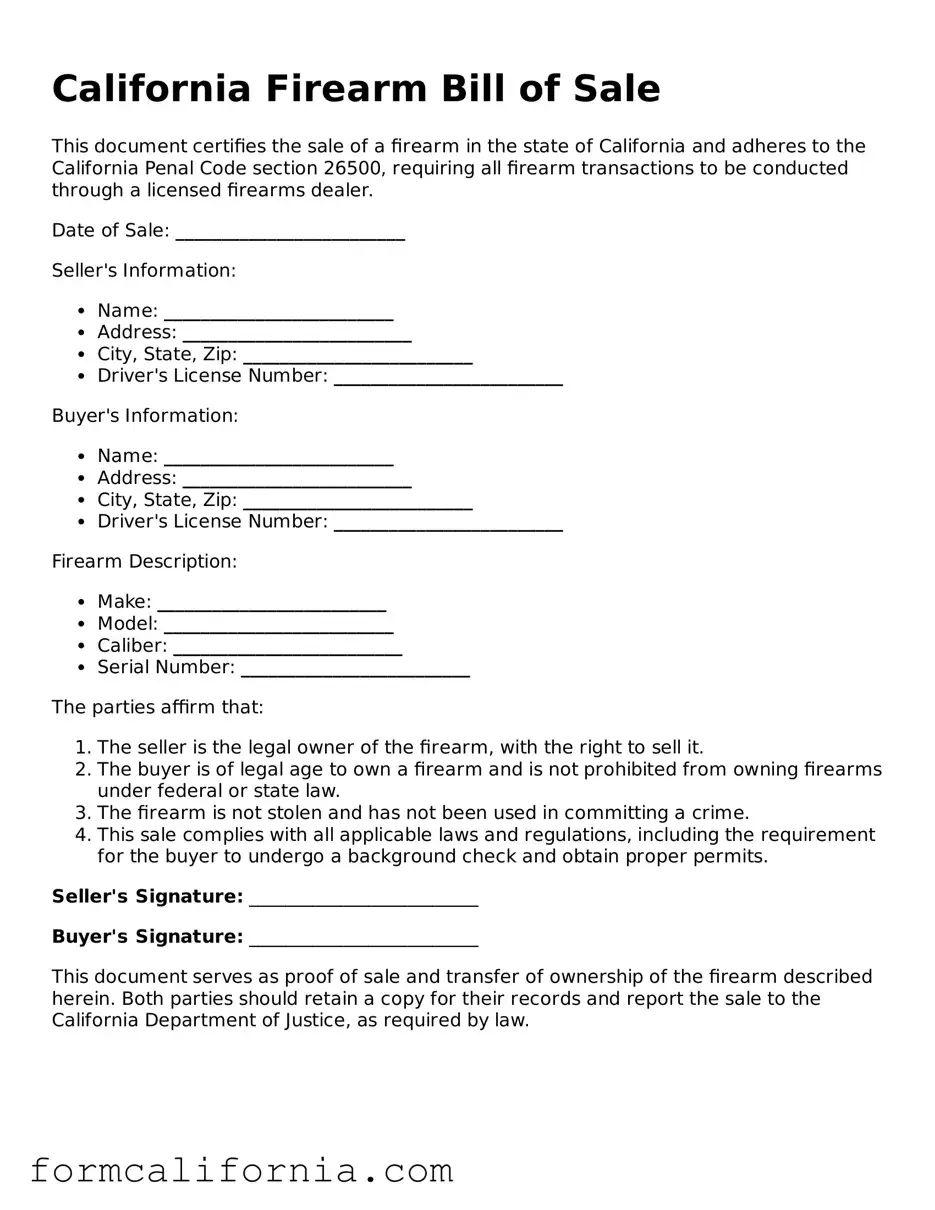The California Firearm Bill of Sale form shares similarities with the Vehicle Bill of Sale form. Both serve as proof of a transfer of ownership between two parties. In each case, critical information such as the make, model, and serial number or VIN (Vehicle Identification Number), as well as the details of the seller and buyer, are recorded. This documentation ensures that the transaction is legally recognized and can be used for registration and tax purposes. Furthermore, they both offer a layer of protection for the buyer and seller, confirming the terms of the sale were agreed upon by both parties.
Another comparable document is the General Bill of Sale. This version is a more universal form used for the sale of personal property items other than vehicles or firearms, such as electronics, furniture, or other tangible goods. Similar to the Firearm Bill of Sale, it includes information about the seller and buyer, a description of the item sold, and the sale price. It essentially serves the same purpose: to memorialize the transaction and provide proof of ownership transfer, but it is used for a broader range of items.
The Business Bill of Sale form also shares characteristics with the Firearm Bill of Sale. This document finalizes the transfer of ownership of a business from one entity to another and includes critical details like business assets, stock, and company information. While it covers a different type of property, the core purpose remains the same: to provide a legal record of the sale, including the terms, conditions, and acknowledgment from both the buyer and seller.
Equine Bill of Sale documents, used in the transfer of ownership of horses, reflect similarities to the Firearm Bill of Sale form too. They record specific details about the item being sold (in this case, the horse), such as breed, date of birth, and health information, along with the sale agreement particulars. Although the subject matter differs, both forms serve to legally document the sale and protect the interests of both parties involved in the transaction.
The Artwork Bill of Sale is another document that mirrors the Firearm Bill of Sale in many ways. This specialized form documents the sale of artwork and includes a detailed description of the piece, the artist's name, the provenance, and the purchase price. Like the firearm document, it proves the transfer of ownership and ensures that the sale is recognized legally, providing a clear history of ownership that is particularly important for valuation and authentication purposes.
Last but not least, the Equipment Bill of Sale is akin to the Firearm Bill of Sale, aiming to formalize the sale of machinery or equipment. It captures specifics such as the make, model, condition, and serial number, alongside buyer and seller information and the sale agreement. Although the items being sold differ, the intent remains consistent across both documents: to record the sale transaction in a manner that is legally binding and beneficial for record-keeping and future reference.
